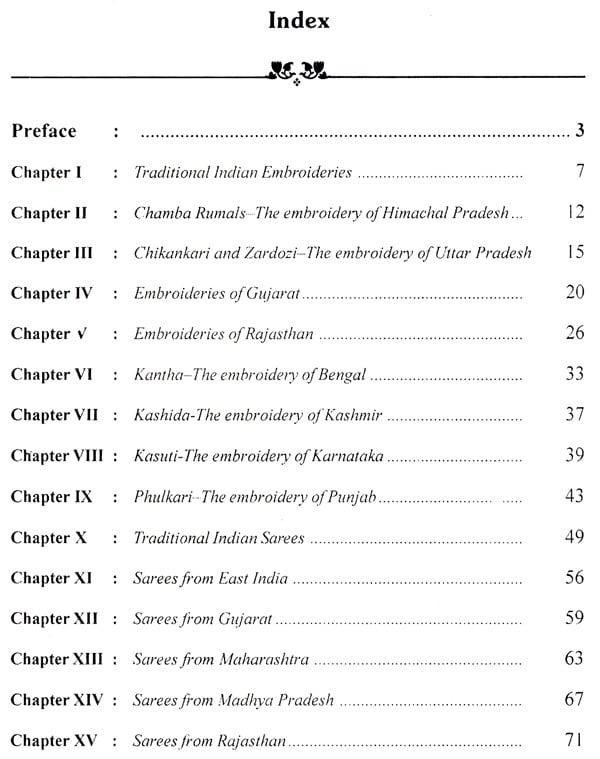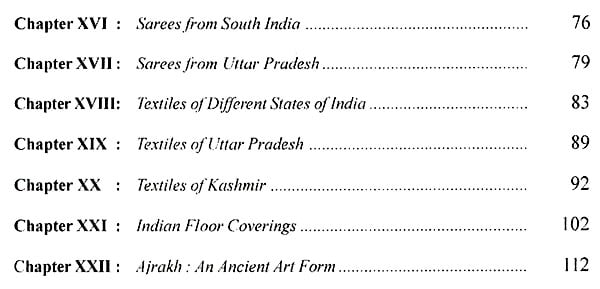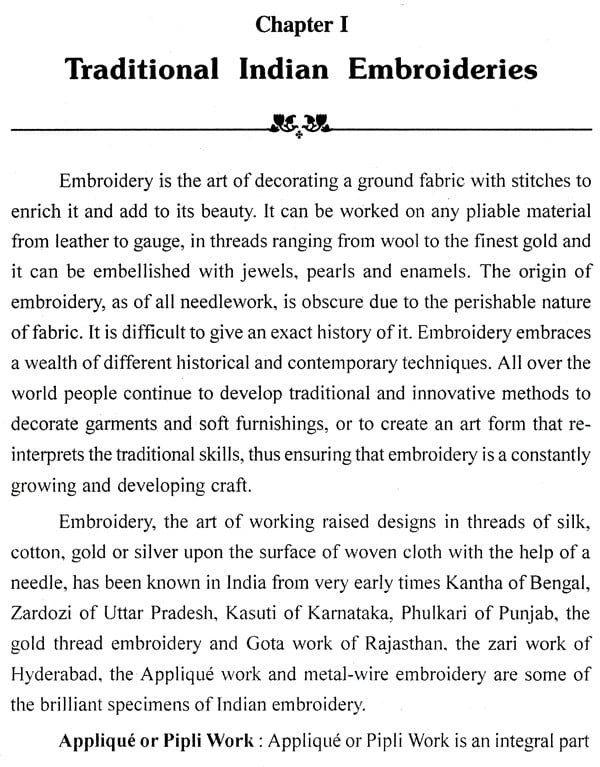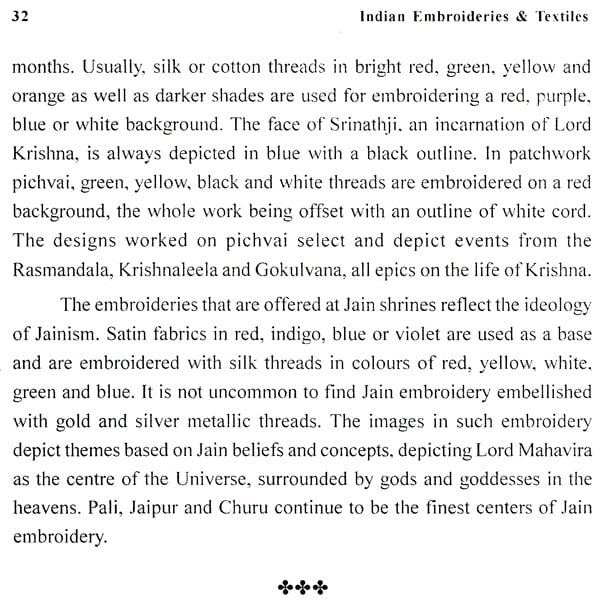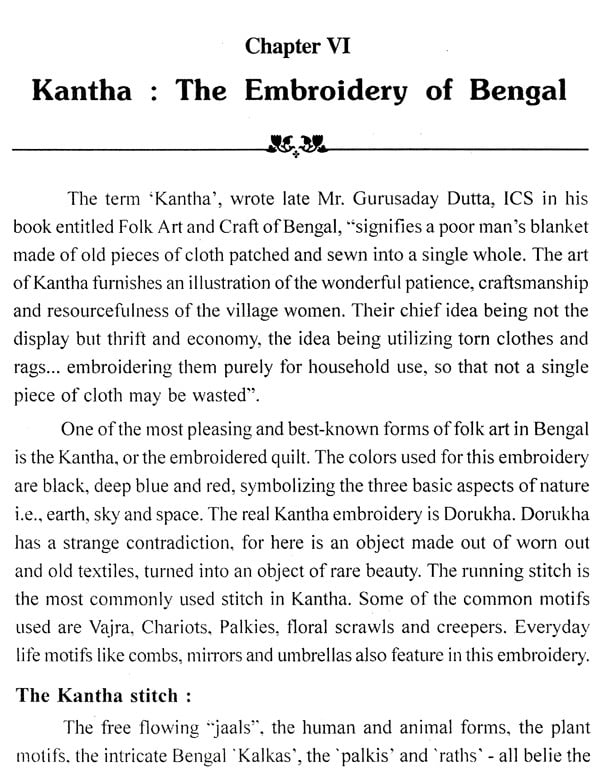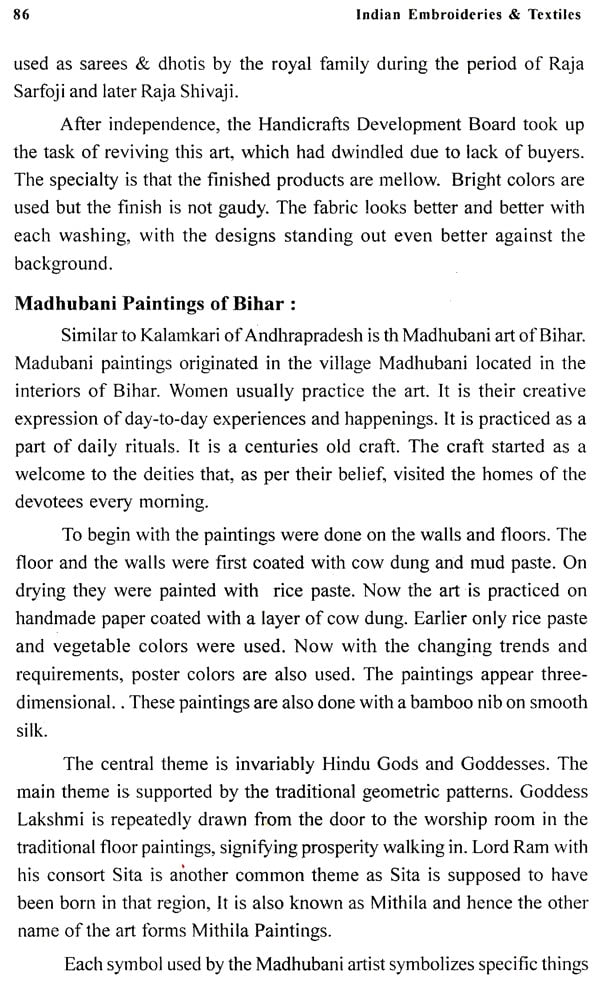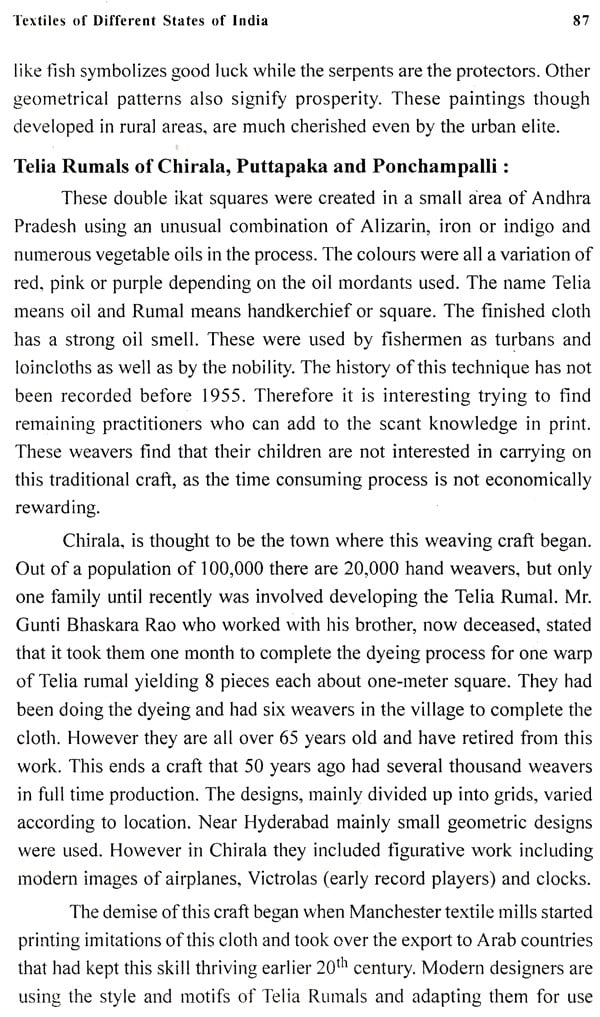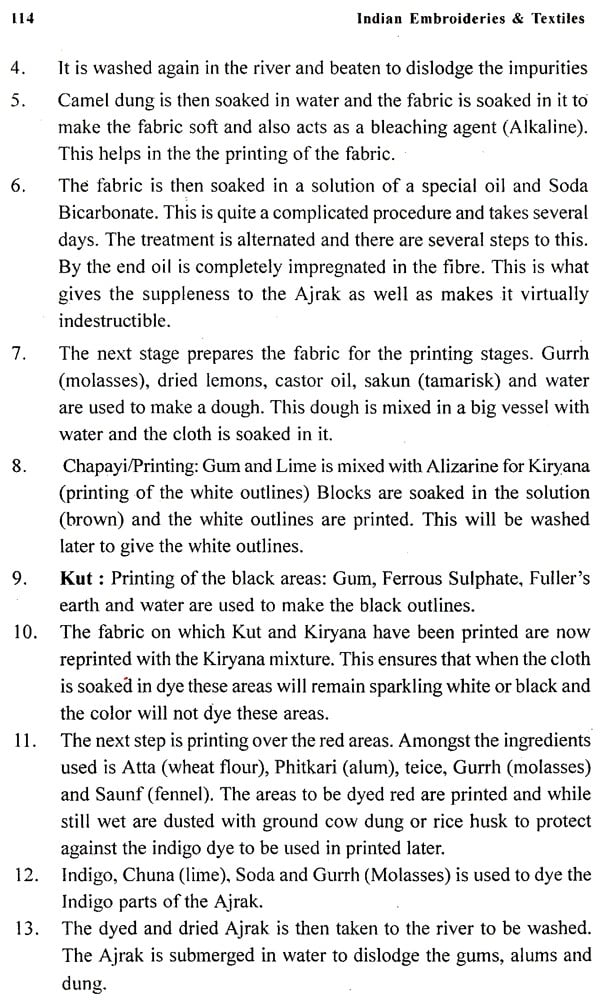
Indian Embroideries and Textiles
Book Specification
| Item Code: | UAB580 |
| Author: | Inderpal Rai |
| Publisher: | Books Treasure |
| Language: | English |
| Edition: | 2008 |
| ISBN: | 9788190042297 |
| Pages: | 115 |
| Cover: | HARDCOVER |
| Other Details | 9.00 X 6.00 inches |
| Weight | 350 gm |
Book Description
India has a diverse and rich textile tradition. The origin of Indian textiles can be traced to the Indus valley civilization. The people of this civilization used homespun cotton for weaving their garments. Excavations at Harappa and Mohen -jo-Daro, have unearthed household items like needles made of bone and spindles made of wood, amply suggesting that homespun cotton was used to make garments. Fragments of woven cotton have also been found from these sites.
Designs and motifs have undergone changes gradually and imperceptibly. These changes can be traced through paintings made during different periods. Ajanta and Bagh murals show the existence of different techniques of designs and textiles. During the Gupta period (14th century A.D.) popular designs were formal floral motifs or scrolls entwined with hansas or sinhas -bird and animal depictions. In the 16th century, the old designs were replaced by Persian floral motifs. Akbari paintings show half-blooming flowers, the Jehangir period, full-blown blossom and the Shahjehan period, tiny blossoms with emphasis on the leaves. In the 19th century, with the advent of British rule, there was a drastic change in designs. Some brocades started depicting English wallpaper designs to suit the tastes of the British rulers. Looking back a hundred years, one is amazed to find that in spite of rapid industrialization; most of the age-old centers of handloom textiles still continue to produce beautifully woven fabrics.
**Contents and Sample Pages**
